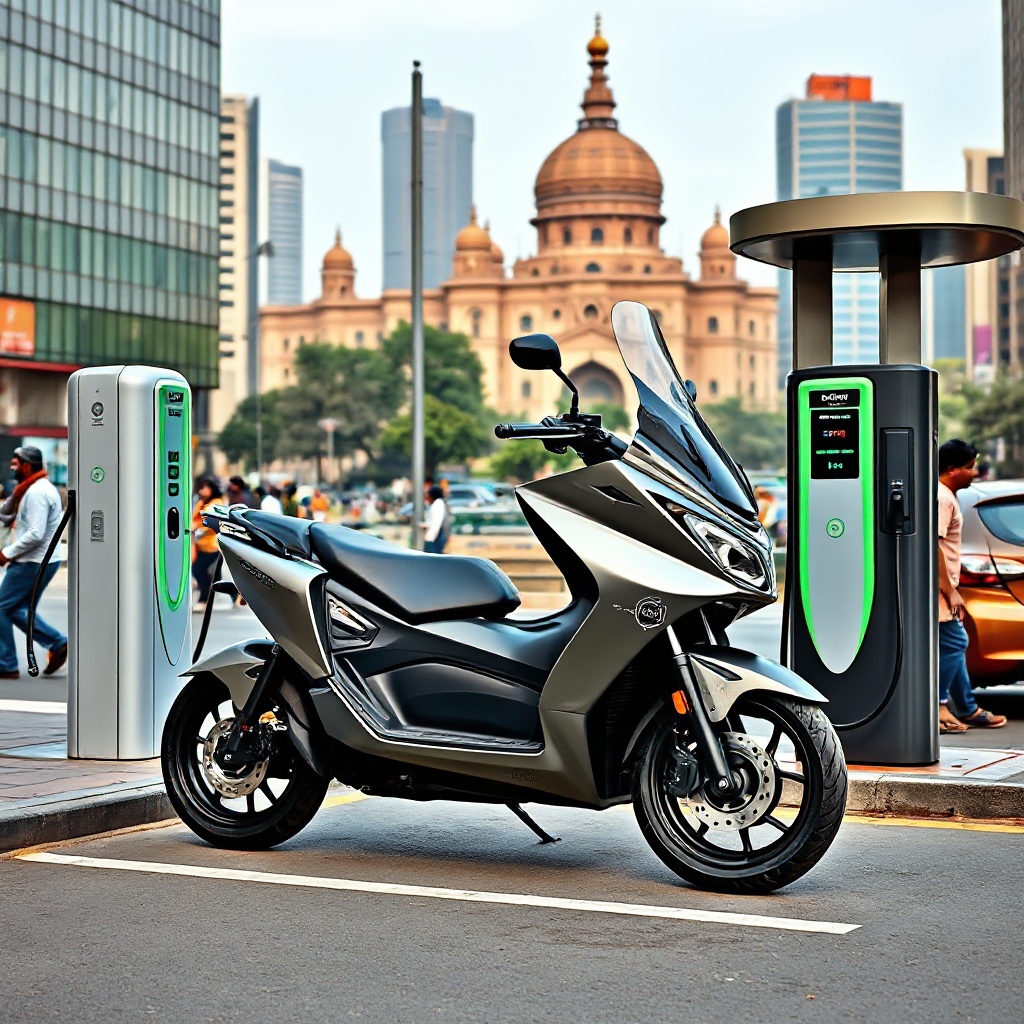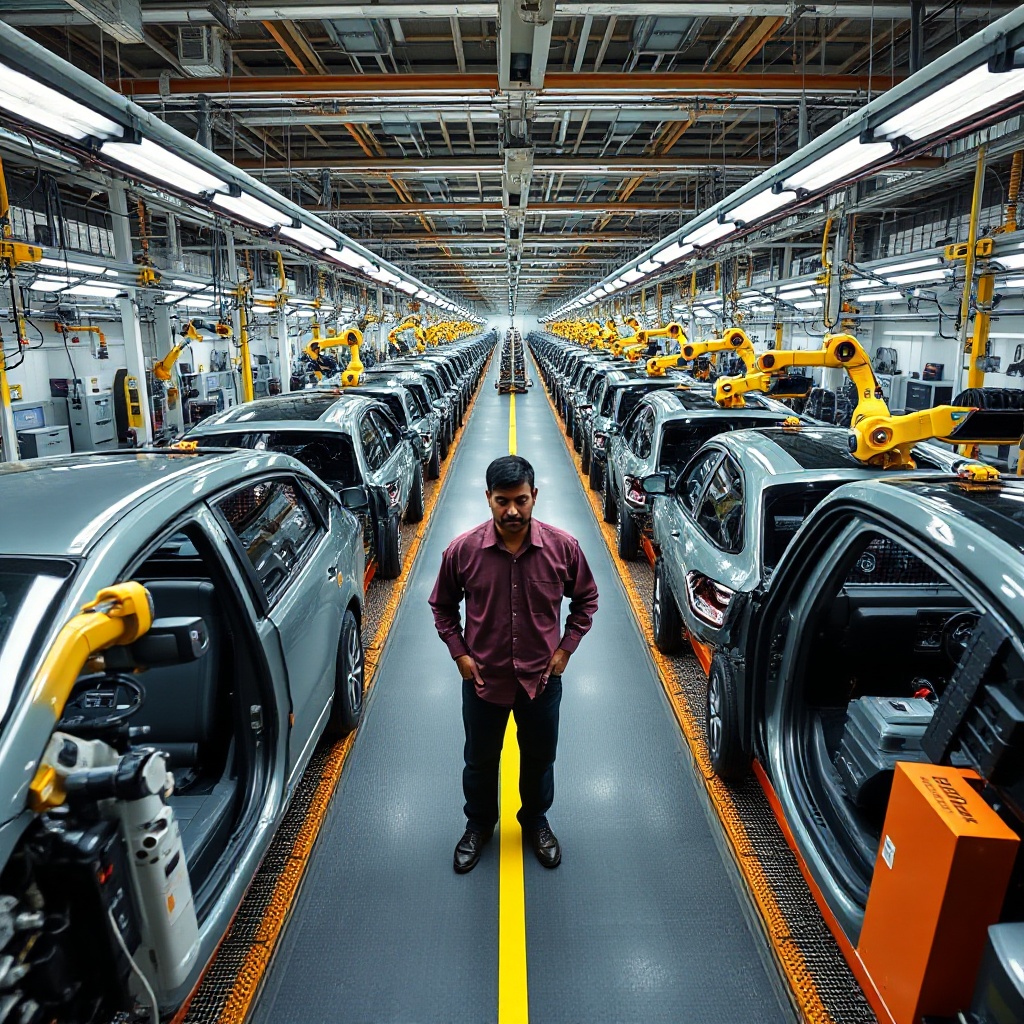
India's EV market surges 34% year-over-year, with sales projected to reach $110.74B by 2029. Two-wheelers lead with 56% market share amid growing government support.

Drivetech Partners
India's electric vehicle revolution is gaining tremendous momentum, with sales jumping 34% year-over-year in Q2 2025 and bringing total registered EVs to over 6.44 million. This transformation is creating ripple effects across the automotive industry, with market valuations expected to surge from USD 8.49 billion in 2024 to an impressive USD 110.74 billion by 2029, reflecting the country's commitment to sustainable transportation.
Key Takeaways
India's EV market is forecasted to grow at a CAGR of 40.7% through 2030, with overall sales projected to reach 17 million units by that year
Electric two-wheelers dominate the market with 56% market share, led by manufacturers like Ola Electric, TVS, and Ather Energy
Government initiatives including the FAME and PLI schemes are catalyzing domestic manufacturing and adoption
EV sector jobs offer 45-50% higher salaries than conventional automotive roles, particularly in specialized fields
Despite rapid growth, challenges remain in charging infrastructure and reducing upfront costs which remain 20-30% higher than ICE vehicles
The Booming EV Market in India: Current Trends and Future Projections
India's electric vehicle market is experiencing explosive growth, with 530,386 EV sales registered in Q2 2025 alone. This 34% year-over-year increase has pushed the total number of registered EVs to over 6.44 million nationwide. The market, valued at USD 8.49 billion in 2024, is on a steep upward trajectory with projections indicating it will reach USD 54.41 billion in 2025 and USD 110.74 billion by 2029.
Current EV penetration sits at approximately 8% of overall auto sales, but this figure is rapidly increasing as consumer awareness grows and government initiatives take effect. The sector's impressive CAGR of 40.7% through 2030 signals a fundamental shift in India's transportation landscape, with total EV sales expected to cross the 17 million unit milestone by the end of this decade.

Segment-wise Growth: Two-wheelers Lead the Charge
Electric two-wheelers have emerged as the dominant segment in India's EV market, accounting for 56% (298,690 units) of total EVs sold in FY 2024-25. Annual sales in this category have already exceeded the 1 million unit mark, highlighting the segment's rapid adoption and market penetration.

The market leaders in the two-wheeler category include Ola Electric, TVS, Bajaj Auto, and Ather Energy, with popular models like the Ola S1, TVS iQube, and Ather 450X capturing consumer attention. The segment's success can be attributed to lower entry prices compared to four-wheelers, easier charging solutions, and practical daily use cases for urban commuters.
Meanwhile, electric four-wheelers registered 115,800 units in FY 2024-25, marking a 15% year-over-year increase. This segment is dominated by Tata Motors, with MG Motor, Mahindra & Mahindra, Hyundai, and BYD also making significant inroads. Notable models include the Nexon EV, Tiago EV, and MG ZS EV, which have helped bring electric mobility to mainstream consumers.
Government Policies Accelerating EV Adoption
India's rapid EV growth is largely fueled by strategic government initiatives designed to accelerate adoption and build domestic manufacturing capabilities. The Faster Adoption and Manufacturing of Hybrid & Electric Vehicles (FAME) Scheme has been pivotal in providing incentives for advanced battery development and registered vehicles, particularly mass-segment e-2Ws, e-3Ws, e-4Ws, and e-buses.
FAME II, launched in April 2019, has specifically focused on electrifying public and shared transport, which has been instrumental in growing demand and supporting infrastructure development. Additionally, the Production Linked Incentive (PLI) Scheme is boosting domestic manufacturing of critical EV components.
Under the PLI scheme, companies are required to invest ₹41.5 billion (approximately $486 million) in EV production facilities and meet 100% domestic content requirements to be eligible for incentives. This approach aligns with the government's ambitious target of having 30% of new vehicle sales be EVs by 2030.
State-level initiatives are also gaining traction, with Delhi leading the way by procuring 300 low-floor electric buses to reduce emissions and operational costs. These combined efforts at national and state levels create a supportive ecosystem for the EV industry's continued expansion.
Expanding Job Market: Career Opportunities in the EV Sector
The rapid growth of India's EV sector is creating a surge in high-value employment opportunities across engineering, design, manufacturing, software development, sales, and research & development. There's particularly high demand for specialists in battery technology, powertrain integration, EV design, and charging infrastructure development.

What makes these roles especially attractive is the salary premium they command—EV sector positions typically offer 45-50% higher compensation than comparable roles in conventional automotive jobs. This premium reflects both the specialized knowledge required and the competitive talent landscape as companies race to build their EV capabilities.
Major players actively expanding their teams include Mercedes-Benz, Tata Motors, Mahindra & Mahindra, and Ola Electric. Innovative startups like Ather Energy and Saera Electric Auto are also driving job creation, particularly in specialized areas like battery management systems and vehicle connectivity solutions.
Manufacturing Revolution: Building a Domestic EV Ecosystem

India is working to establish a robust domestic manufacturing base for electric vehicles and their components. The PLI scheme has been pivotal in this effort, requiring companies to meet 100% domestic content requirements to qualify for incentives. This approach aims to reduce dependence on imports and create a self-sufficient supply chain.
The three-wheeler segment is gaining particular traction in last-mile mobility solutions, with companies like Mahindra Last Mile, Bajaj Auto, and YC Electric leading innovation. Simultaneously, the luxury segment is expanding with entries from Mercedes-Benz, BMW, and Volvo, offering premium electric options to affluent consumers.
Supporting industries for batteries, motors, and electronic components are also seeing significant growth. This expansion creates a virtuous cycle of investment, innovation, and job creation across the entire EV ecosystem. The development of local manufacturing capabilities is crucial for long-term cost reduction and making EVs more affordable for the average Indian consumer.
Challenges and Barriers to EV Adoption
Despite the positive momentum, several challenges continue to hinder more widespread EV adoption in India. The high upfront costs of EVs, typically 20-30% above internal combustion engine (ICE) vehicles, remain a significant barrier for cost-conscious consumers. This price premium, though gradually decreasing, still impacts purchase decisions, particularly in the price-sensitive Indian market.
Charging infrastructure limitations present another major hurdle. The current network of public charging stations is inadequate for supporting mass adoption, especially outside major urban centers. This creates range anxiety among potential buyers and limits the practical usability of EVs for long-distance travel.
India's continued reliance on imported batteries and components also affects pricing and supply chain resilience. While passenger EV sales are growing, they still constitute only 2.5-4.1% of total vehicle sales, indicating that the transition is still in its early stages.
Government policy changes and potential subsidy expirations could impact future growth momentum. For sustained development, the industry needs consistent and cohesive policy support beyond current initiatives to overcome these structural challenges.
The Sustainability Factor: Environmental Impact and Innovation
Electric vehicles are central to India's efforts to reduce carbon emissions and improve urban air quality. The transportation sector contributes significantly to pollution in major cities, making the shift to EVs a critical environmental priority. This transition responds to growing public awareness and policy pressure for sustainable transport solutions.
Innovation in battery technology is making EVs increasingly accessible, with improvements in energy density, charging speeds, and overall performance. These advancements are gradually addressing concerns about range limitations and affordability that have previously hampered adoption.
The EV revolution is fueling an industry-wide transformation toward greener transportation options. As the technology matures and economies of scale reduce costs, electric mobility is becoming a viable alternative for millions of Indian consumers who previously relied exclusively on fossil fuel-powered vehicles.
Sources
Mercom India - Electric Vehicle Sales Clock 34% YoY Growth in Q2 2025
Grand View Research - India Electric Vehicle Market Report
NDTV - Electric Passenger Vehicle Retail Sales Contribute 4.1 Per Cent Market Share in May 2025
Mordor Intelligence - India Electric Vehicle Market
Statista - India Electric Vehicle Sales by Type
S&P Global - India EV Market Trends Future
EVreporter






